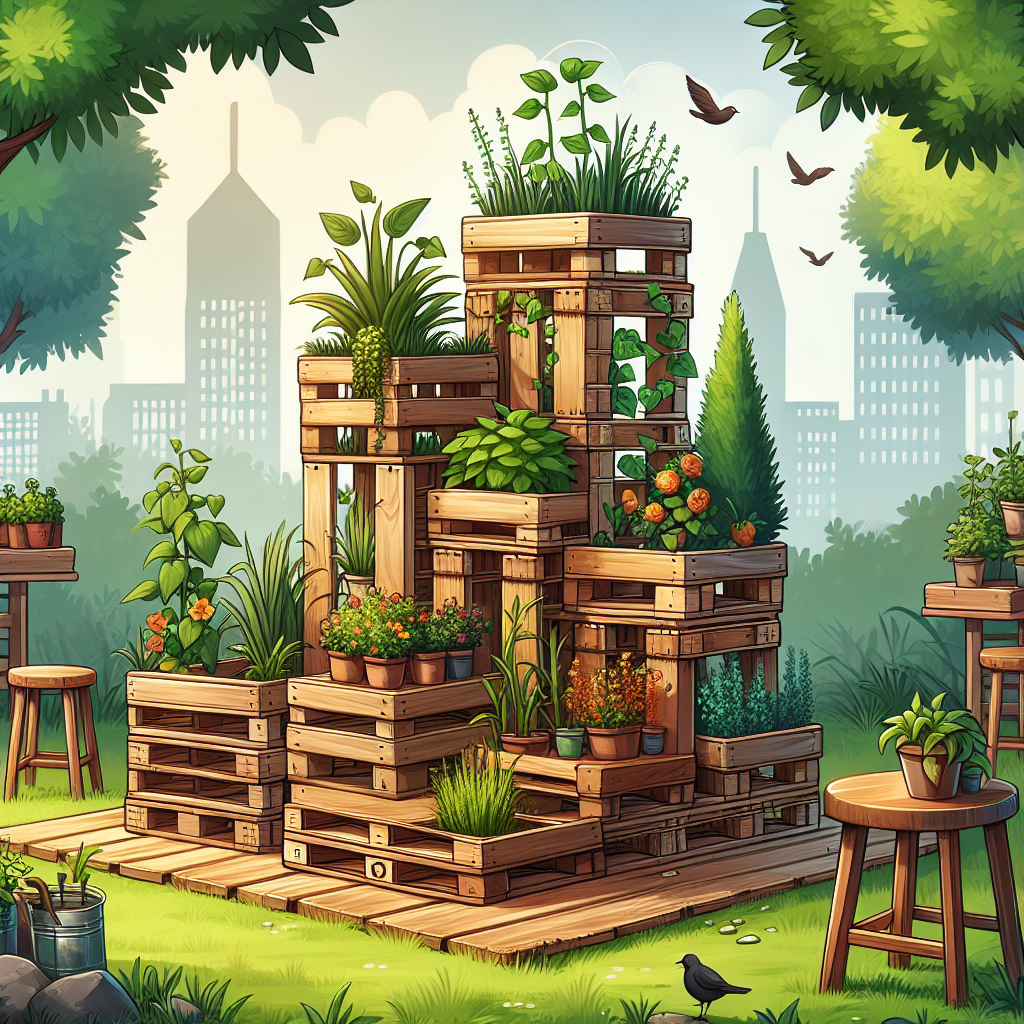Introduction: Using Pallets for Gardening
Pallets are versatile and cost-effective materials that can be repurposed for various purposes, including gardening. Using pallets in gardening has gained popularity due to their numerous benefits, such as providing an efficient use of space and promoting sustainability.
Benefits of Using Pallets in Gardening
Using pallets in gardening offers several benefits. According to gardening experts, pallet gardens make it possible for people with limited space, such as urban dwellers or apartment tenants, to grow their own plants. Heather Rhoades, a gardening expert, explains:
"Pallet gardens are an excellent solution for people who have small yards, balconies, or limited gardening space. They allow you to make the most of your available space and grow your own vegetables, herbs, or flowers."
Pallets also provide a sustainable gardening solution by repurposing materials that would otherwise end up in landfills. By using pallets, gardeners contribute to reducing waste and promoting environmental responsibility.
How to Prepare a Pallet for Gardening
To prepare a pallet for gardening, it is essential to follow specific steps to ensure the pallet is safe for planting. Here is a step-by-step guide to preparing a pallet for gardening:
Choose a pallet: Look for pallets that are made from untreated wood and are not chemically treated or painted. This will minimize the risk of harmful chemicals leaching into the soil.
Clean the pallet: Thoroughly clean the pallet using a stiff brush and water. Remove any dirt, debris, or loose splinters. It is important to remove all traces of dirt to prevent pests and diseases.
Sand the pallet: Sanding the pallet will help create a smoother surface and reduce the risk of splinters. Use sandpaper with a medium grit to sand down any rough edges or surfaces.
Line the pallet: Line the inside of the pallet with landscape fabric or a geotextile fabric to prevent soil from falling through the gaps while allowing for drainage. Secure the fabric with staples or nails.
Fill the pallet with soil: Fill the pallet with a high-quality potting mix or a soil mix suitable for the plants you plan to grow. Leave enough space at the top for watering and plant growth.
Plant your garden: Once the pallet is filled with soil, you can start planting your garden. Follow the recommended spacing and planting depth for the plants you are growing.
Case Study: Successful Pallet Garden Projects
Several successful pallet garden projects demonstrate the effectiveness of using pallets in gardening. In one case study, a community garden in an urban area used pallets to create vertical gardens. The project resulted in an increase in the overall garden yield while maximizing the use of limited space.
Another case study involves a restaurant that implemented a rooftop pallet garden to grow fresh herbs and vegetables. This initiative allowed the restaurant to offer locally sourced produce and enhanced the dining experience for their customers.
These case studies showcase the versatility and practicality of pallet gardens and provide inspiration for incorporating pallets into gardening projects.
Expert Insights: The Advantages of Pallet Gardens
Gardening experts emphasize the advantages of using pallets in gardening. According to Mike McGrath, host of the radio show "You Bet Your Garden," pallet gardens provide an excellent solution for urban gardeners:
"Pallet gardens are a game-changer for urban gardeners. They enable people to grow their own food even in spaces where traditional gardening is not an option."
Furthermore, pallet gardens allow for better organization and can be easily controlled in terms of watering and pest control. Expert gardener Sally Cunningham states:
"Pallet gardens are an excellent way to organize your plants and manage watering and pest control. They provide a controlled environment that allows you to optimize plant growth and minimize the risk of pests."
These expert insights highlight the practical advantages of using pallets in gardening and support the growing trend of pallet garden adoption.
Tips for Maximizing Efficiency in Pallet Gardening
To maximize efficiency in pallet gardening, consider the following tips:
Choose the right plants: Select plants that are suitable for the growing conditions and available space. Vertical plants, such as vines or tall herbs, work well in pallet gardens.
Utilize vertical space: Take advantage of the vertical space by training plants to grow vertically. Attach trellises or supports to the pallet and guide the plants upward.
Implement companion planting: Practice companion planting by growing compatible plants together. This will help optimize space, deter pests, and improve overall plant health.
Use a drip irrigation system: Install a drip irrigation system to ensure efficient and consistent watering. This will reduce water wastage and provide plants with a steady water supply.
Rotate crops: To avoid soil depletion and prevent the buildup of pest populations, rotate crops within the pallet garden. This will help maintain soil health and improve overall garden productivity.
By following these tips, gardeners can make the most of their pallet gardens and achieve optimal results.
Conclusion: Leveraging Pallets for a Sustainable Garden
Using pallets in gardening offers numerous benefits, including efficient use of space, sustainability, and accessibility for urban gardeners. By repurposing pallets, gardeners contribute to reducing waste and promoting environmental responsibility. The step-by-step guide provided in this article ensures that pallets are prepared safely and effectively for gardening. Case studies and expert insights further highlight the advantages of pallet gardens and inspire creative gardening projects. By maximizing efficiency through proper plant selection, vertical gardening techniques, and implementing sustainable practices, gardeners can leverage pallets for a sustainable and productive garden.
Call to Action: Join the Conversation about Pallet Gardens
Are you interested in pallet gardening? Join the conversation and share your experiences, tips, and success stories in the comments below. Engage with other gardening enthusiasts and inspire others to explore the possibilities of pallet gardens. Let's continue the discussion on how pallets can revolutionize gardening and contribute to sustainable practices.
Topics




